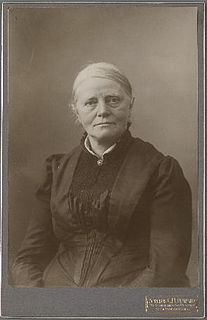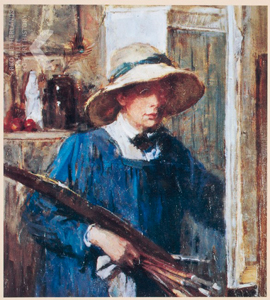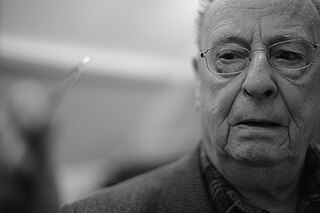
The Hague School is a group of artists who lived and worked in The Hague between 1860 and 1890. Their work was heavily influenced by the realist painters of the French Barbizon school. The painters of the Hague school generally made use of relatively somber colors, which is why the Hague School is sometimes called the Gray School.

The Kunstmuseum Den Haag is an art museum in The Hague in the Netherlands, founded in 1866 as the 'Museum voor Moderne Kunst'. Later, until 1998, it was known as 'Haags Gemeentemuseum', and until the end of September 2019 as 'Gemeentemuseum Den Haag'. It is renowned for its large Mondrian collection, the largest in the world. His last work, Victory Boogie-Woogie, is on display here.

Amsterdam Impressionism was an art movement in late 19th-century Holland. It is associated especially with George Hendrik Breitner and is also known as the School of Allebé.

Willem Roelofs was a Dutch painter, water-colourist, etcher, lithographer and draughtsman. Roelofs was one of the forerunners of the Dutch Revival art, after the Romantic Classicism of the beginning of the 19th century, which led to the formation of The Hague school. His landscapes, especially the early ones with their dominating cloudy skies, demure bodies of water and populated with cattle, are typical for the School of Barbizon.

Pieter Florentius Nicolaas Jacobus Arntzenius was a Dutch painter, water-colourist, illustrator and printmaker. He is considered a representative of the younger generation of the Hague School.
The Miniature Museum of Modern and Contemporary Art was founded by Ria and Lex Daniels in 1990. It was initially located at the AMC hospital in Amsterdam, but moved to the Kunstmuseum Den Haag in 2013, where it was on a long-term loan for five years.

Pulchri Studio is a Dutch art society, art institution and art studio based in The Hague ('s-Gravenhage), Netherlands.

Sina (Sientje) van Houten was the wife of Hendrik Willem Mesdag, the Dutch marine painter of the Hague School, and a painter herself.

The Amsterdamse Joffers were a group of women artists in Amsterdam who met weekly in the last quarter of the 19th century to paint and show their works together. They were known for their style that followed the example of the Amsterdam Impressionists, and were all members of the Amsterdam artist societies Arti et Amicitiae and Sint Lucas, and most followed the lessons by professor August Allebé of the Rijksakademie van beeldende kunsten of Amsterdam.
Willem Schrofer was a Dutch art teacher and painter. His vision influenced the Nieuwe Haagse School movement.

Jacob Jan van der Maaten was a Dutch painter and etcher. Van der Maaten was a pupil of Hendrikus van de Sande Bakhuyzen and studied at the Royal Academy of Art, The Hague. In 1852 he became a member of the Royal Academy of Fine Arts in Amsterdam. Later, Van der Maaten became teacher at the so-called King’s School in Apeldoorn (1866–1879).

Berend Strik is a Dutch visual artist working and living in Amsterdam.

Jan Hillebrand Wijsmuller was a Dutch painter. He belongs to The 2. Golden Age of Dutch Painting.

Jacoba Surie was a Dutch painter.

Henricus Petrus Cornelis (Kees) Verschuren is a Dutch sculptor, painter and former lecturer at the Willem de Kooning Academie in Rotterdam, known for his monumentalist sculptures in public places in the Netherlands.

The New Hague School is a movement in the fine arts of the fifties and sixties of the 20th century. It opposed the Cobra avant-garde movement and found its inspiration in 17th-century art and the experiences of the Barbizon School and the resulting Hague School.
Barbara Visser is a Dutch artist, who works as conceptual artist, photographer, video artist, and performance artist.

Jacobus "Co" Westerik was a Dutch visual artist.
Thimo te Duits is a Dutch art historian, curator, author and editor, known for his numerous contributions in the field of Dutch applied art.
Ecoline "Etie" Adrienne van Rees (1879-1959) was a Dutch ceramist.















